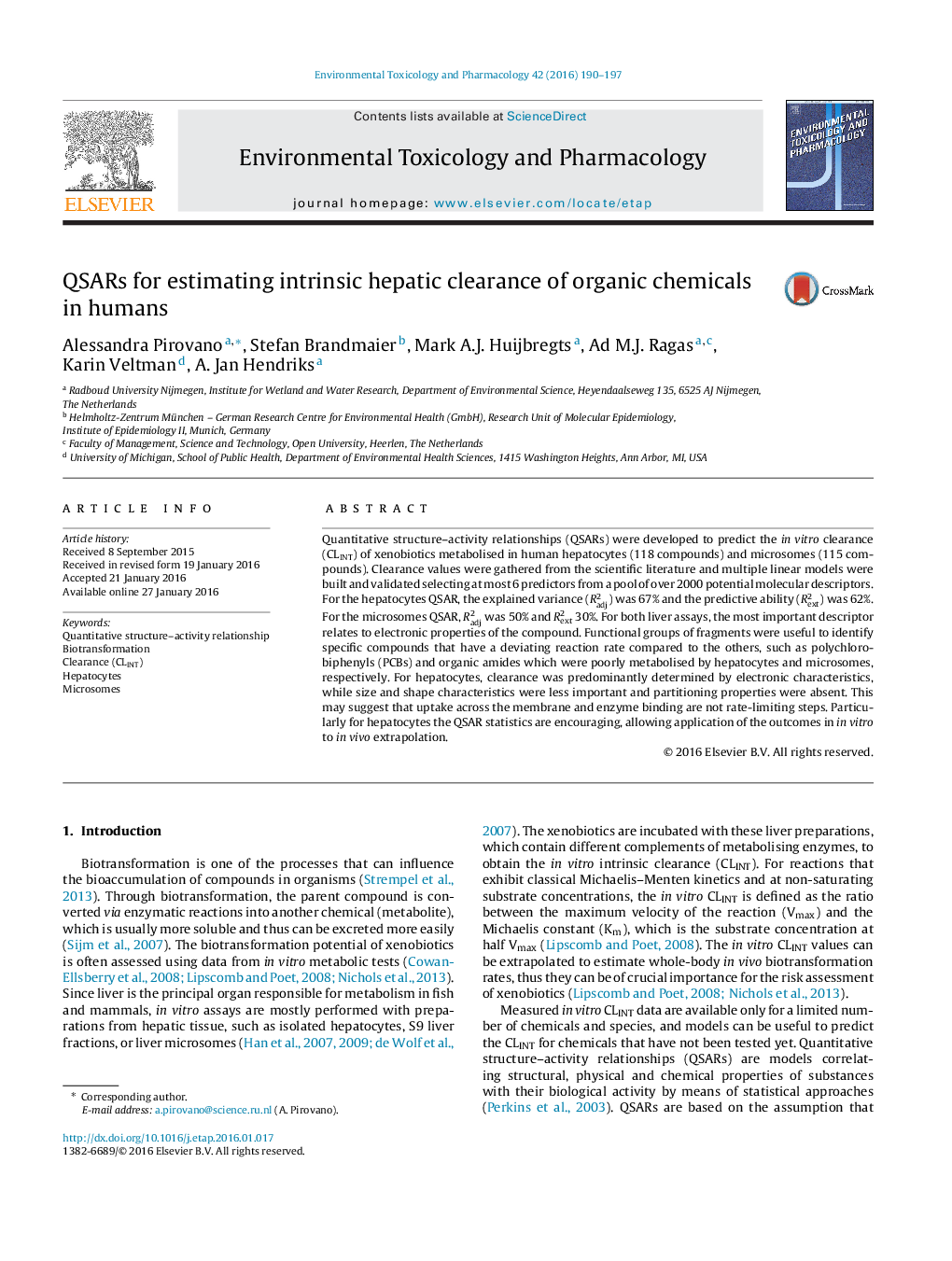| کد مقاله | کد نشریه | سال انتشار | مقاله انگلیسی | نسخه تمام متن |
|---|---|---|---|---|
| 5848687 | 1561702 | 2016 | 8 صفحه PDF | دانلود رایگان |
عنوان انگلیسی مقاله ISI
QSARs for estimating intrinsic hepatic clearance of organic chemicals in humans
دانلود مقاله + سفارش ترجمه
دانلود مقاله ISI انگلیسی
رایگان برای ایرانیان
کلمات کلیدی
موضوعات مرتبط
علوم زیستی و بیوفناوری
علوم محیط زیست
بهداشت، سم شناسی و جهش زایی
پیش نمایش صفحه اول مقاله

چکیده انگلیسی
Quantitative structure-activity relationships (QSARs) were developed to predict the in vitro clearance (CLINT) of xenobiotics metabolised in human hepatocytes (118 compounds) and microsomes (115 compounds). Clearance values were gathered from the scientific literature and multiple linear models were built and validated selecting at most 6 predictors from a pool of over 2000 potential molecular descriptors. For the hepatocytes QSAR, the explained variance (Radj2) was 67% and the predictive ability (Rext2) was 62%. For the microsomes QSAR, Radj2 was 50% and Rext2 30%. For both liver assays, the most important descriptor relates to electronic properties of the compound. Functional groups of fragments were useful to identify specific compounds that have a deviating reaction rate compared to the others, such as polychlorobiphenyls (PCBs) and organic amides which were poorly metabolised by hepatocytes and microsomes, respectively. For hepatocytes, clearance was predominantly determined by electronic characteristics, while size and shape characteristics were less important and partitioning properties were absent. This may suggest that uptake across the membrane and enzyme binding are not rate-limiting steps. Particularly for hepatocytes the QSAR statistics are encouraging, allowing application of the outcomes in in vitro to in vivo extrapolation.
ناشر
Database: Elsevier - ScienceDirect (ساینس دایرکت)
Journal: Environmental Toxicology and Pharmacology - Volume 42, March 2016, Pages 190-197
Journal: Environmental Toxicology and Pharmacology - Volume 42, March 2016, Pages 190-197
نویسندگان
Alessandra Pirovano, Stefan Brandmaier, Mark A.J. Huijbregts, Ad M.J. Ragas, Karin Veltman, A. Jan Hendriks,